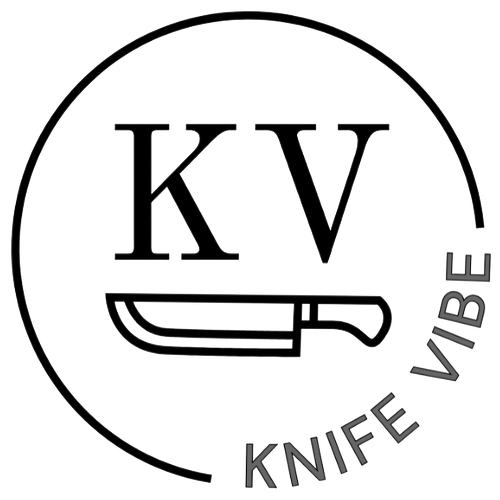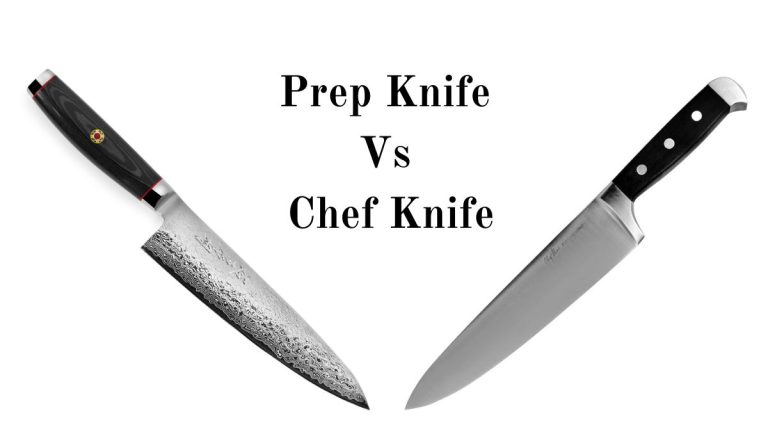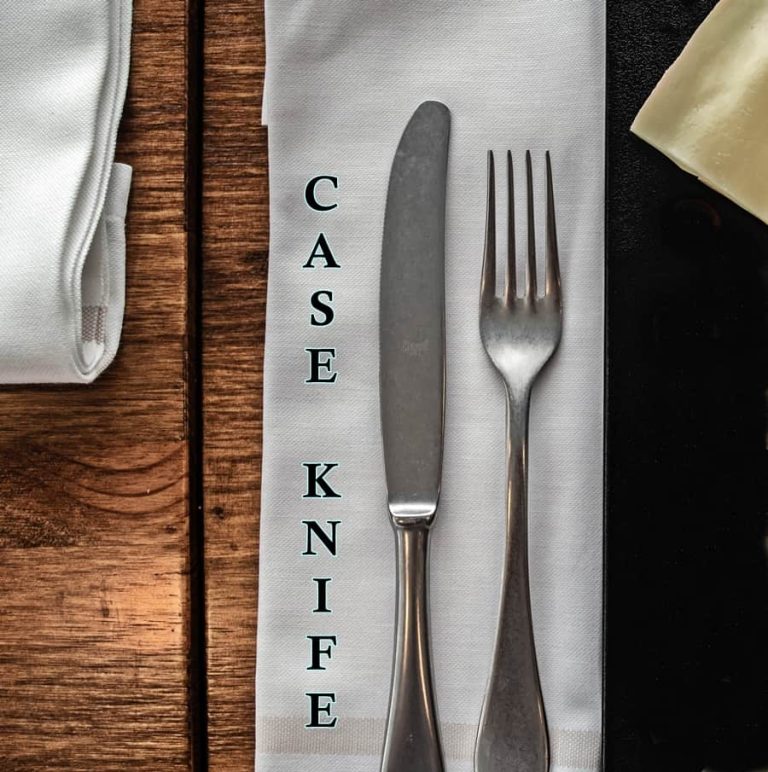Santoku Vs Chefs Knife: Which One Should You Choose?
In the world of cooking, knives are essential tools. Two popular options are the Santoku and Chef’s knife.
Both knives have unique features and uses. Comparing them can help you choose the right one for your kitchen. The Santoku knife, originating from Japan, is known for its versatility and precision. It excels in slicing, dicing, and chopping. The Chef’s knife, on the other hand, is a Western favorite.
It’s praised for its balance and multipurpose capabilities. Understanding the differences between these two knives can improve your culinary skills. Whether you’re a home cook or a professional chef, knowing which knife to use can make food preparation easier and more enjoyable. Let’s dive into the specifics to see which knife suits your needs best.

Credit: imarku.net
Introduction To Kitchen Knives
Every home cook needs the right tools. One essential tool is a good kitchen knife. This tool can make your cooking easier and more enjoyable. There are many types of kitchen knives. Each has its own use and purpose. Knowing about these knives can help you choose the best one for your needs.
Importance Of A Good Knife
A good knife is vital in the kitchen. It makes cutting tasks quicker and safer. A sharp knife can cut through food with less effort. This reduces the risk of slipping and cutting yourself. A good knife also helps in preparing food with precision. This means your dishes can look more professional and taste better.
Overview Of Popular Knife Types
Several types of knives are common in kitchens. Each has its own special use.
The chef’s knife is the most popular. It has a broad blade. This makes it great for chopping, slicing, and dicing. It is versatile and can handle many tasks.
The Santoku knife is another favorite. It is shorter and lighter than a chef’s knife. It is great for precise cuts. It is perfect for slicing, dicing, and mincing. Its name means “three virtues,” referring to its three main tasks.
Other popular knives include the paring knife. This small knife is ideal for peeling and cutting small fruits and vegetables. The bread knife has a serrated edge. It is perfect for slicing bread without crushing it.
Understanding these knives can make your cooking more enjoyable. Choose the right knife for the task. Enjoy the process and the results.
What Is A Santoku Knife?
A Santoku knife, originating from Japan, excels in slicing, dicing, and chopping. Its shorter, wider blade contrasts with the longer, narrower chef’s knife.
A Santoku knife is a popular kitchen tool in many homes. Originating from Japan, “Santoku” means “three virtues.” These virtues refer to slicing, dicing, and chopping. This versatile knife has gained fame worldwide due to its unique design and functionality.Design And Features
The Santoku knife has a distinct look. Its blade is shorter and wider compared to a chef’s knife. Usually, the blade measures between 5 to 7 inches. The blade’s edge has a slight curve, unlike the pronounced curve of a chef’s knife. This design allows for precise cutting. Another key feature is the hollow edge. Small indentations along the blade create air pockets. These pockets prevent food from sticking to the blade. The handle is often made from wood or composite materials. It provides a comfortable grip for extended use.Typical Uses
The Santoku knife excels in various kitchen tasks. It is perfect for slicing vegetables. The flat blade ensures even cuts. It is also great for dicing fruits and herbs. The sharp edge makes clean cuts with ease. Chopping meat is another common use. The knife can handle both cooked and raw meat. It is not ideal for cutting through bones, though. The Santoku knife is versatile, making it a favorite for many home cooks. “`What Is A Chef’s Knife?
A chef’s knife is a versatile kitchen tool essential for cutting, slicing, and chopping. It features a broad blade with a pointed tip, perfect for various cooking tasks.
A chef’s knife is a versatile kitchen tool. It is a must-have for professional chefs and home cooks. This knife can handle a variety of tasks. These tasks range from chopping vegetables to slicing meats.Design And Features
A chef’s knife usually has a broad blade. The blade tapers to a point. The length of the blade is typically 8 inches. Some can be as long as 10 inches or as short as 6 inches. The blade is often made of stainless steel or carbon steel. The handle is designed for a comfortable grip. It can be made from wood, plastic, or composite materials. The knife is balanced to reduce strain on the user’s hand.Typical Uses
A chef’s knife is great for chopping vegetables. You can use it to slice fruits. It works well for dicing onions. The knife can also mince garlic. It is perfect for cutting through meat. You can even use it to crush herbs. Its versatility makes it an essential kitchen tool. “`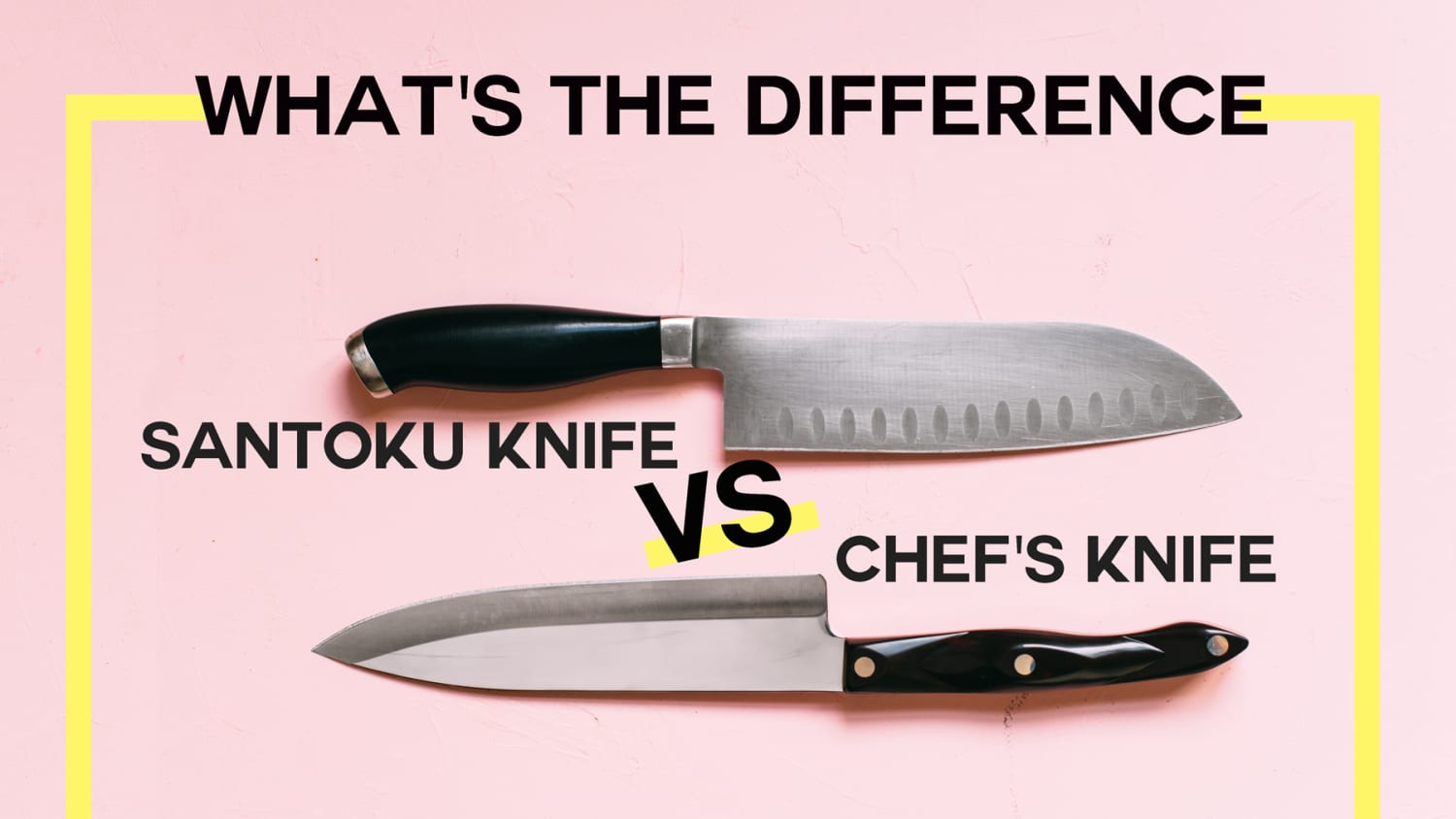
Credit: www.thekitchn.com
Comparing Blade Shapes
Choosing between a Santoku and a Chef’s knife can be tricky. Each blade has a unique shape that affects its cutting performance. Understanding these differences can help you make the best choice for your kitchen needs.
Santoku Blade Shape
The Santoku knife has a distinctive blade shape. It features a straight edge and a rounded tip. This design is ideal for chopping, slicing, and dicing. The straight edge allows for precise cuts and helps in quick, repetitive motions.
Another feature of the Santoku blade is the Granton edge. Small divots along the blade reduce friction. Food doesn’t stick to the knife as easily, making your cutting smoother and faster.
| Feature | Benefit |
|---|---|
| Straight Edge | Precise cuts, ideal for chopping |
| Rounded Tip | Versatile for slicing and dicing |
| Granton Edge | Reduces food sticking |
Chef’s Knife Blade Shape
The Chef’s knife boasts a curved blade. This shape is perfect for a rocking motion while cutting. The curve allows the tip to stay on the cutting board, making it efficient for mincing herbs or garlic.
The Chef’s knife also has a pointed tip. This feature helps in piercing and intricate tasks. The broad blade can be used for crushing garlic cloves or transferring chopped ingredients.
| Feature | Benefit |
|---|---|
| Curved Blade | Efficient for rocking motion |
| Pointed Tip | Ideal for piercing and intricate tasks |
| Broad Blade | Useful for crushing and transferring |
Both the Santoku and Chef’s knife have unique shapes that suit different cutting styles. Understanding these features will help you choose the right knife for your culinary needs.
Weight And Balance
Weight and balance are key factors in choosing a knife. The right knife should feel comfortable and easy to handle. It should not strain your hand during use. Both the Santoku and Chef’s knife have unique weight and balance features. Let’s explore these differences.
Santoku Knife Weight
The Santoku knife is lighter than the Chef’s knife. Its design is sleek and slim. This makes it easier to control. You can make precise cuts with less effort. The lightweight nature also reduces hand fatigue. It is ideal for slicing, dicing, and chopping vegetables. Many home cooks prefer it for its ease of use.
Chef’s Knife Weight
The Chef’s knife is heavier and more robust. It provides more power for tougher tasks. The weight helps with cutting through thicker items. You can easily slice meat or dense vegetables. The added weight offers stability. It balances well in the hand. This makes it versatile for many kitchen tasks. Professional chefs often choose it for its strength and control.
Cutting Techniques
Cutting techniques play a crucial role in food preparation. Each knife type offers unique methods. Santoku and chef’s knives are popular choices. Both have distinct cutting styles. Knowing these techniques can improve your kitchen skills. Let’s explore the specific cutting methods for each knife.
Santoku Cutting Methods
Santoku knives are great for precise cuts. Use the “push cut” technique. Start with the tip of the knife. Push forward as you cut. This method is smooth and efficient. It’s perfect for slicing vegetables and meats. Another technique is the “rock chop.” This involves a slight rocking motion. Keep the blade’s tip on the cutting board. Lift and lower the handle. This helps with mincing and dicing. Santoku knives excel in these tasks.
Chef’s Knife Cutting Methods
Chef’s knives are versatile. The “rock chop” is commonly used. Place the blade’s tip on the board. Rock the handle up and down. This motion is ideal for chopping herbs and vegetables. Another method is the “slice.” Hold the food steady. Pull the knife back while cutting. This technique works well for larger items. Chef’s knives also use the “tap chop.” Make short, quick taps with the blade. This is useful for fine dicing. Master these methods for better results.
Versatility In The Kitchen
The right knife can make all the difference in your kitchen. Whether you are dicing vegetables or slicing meat, having a versatile knife is key. In this section, we will explore the versatility of the Santoku knife and the Chef’s knife. Understanding their unique features can help you decide which is best for your cooking needs.
Santoku Knife Versatility
The Santoku knife originates from Japan. It is known for its precision and ease of use. The blade is shorter and wider than a Chef’s knife. This design makes it perfect for slicing, dicing, and mincing. The Santoku knife excels in cutting vegetables, fish, and delicate items. Its flat edge allows for more control and less rocking motion. It is a great choice for those who prefer a lighter knife.
Chef’s Knife Versatility
The Chef’s knife is a staple in many kitchens. Its design comes from Western culinary traditions. With a longer, curved blade, it is ideal for a variety of tasks. The Chef’s knife can handle everything from chopping herbs to slicing meat. Its versatile design allows for a rocking motion, making it easier to chop quickly. The Chef’s knife offers more heft, giving you power in each cut. It is a reliable option for those who need a multi-purpose tool.
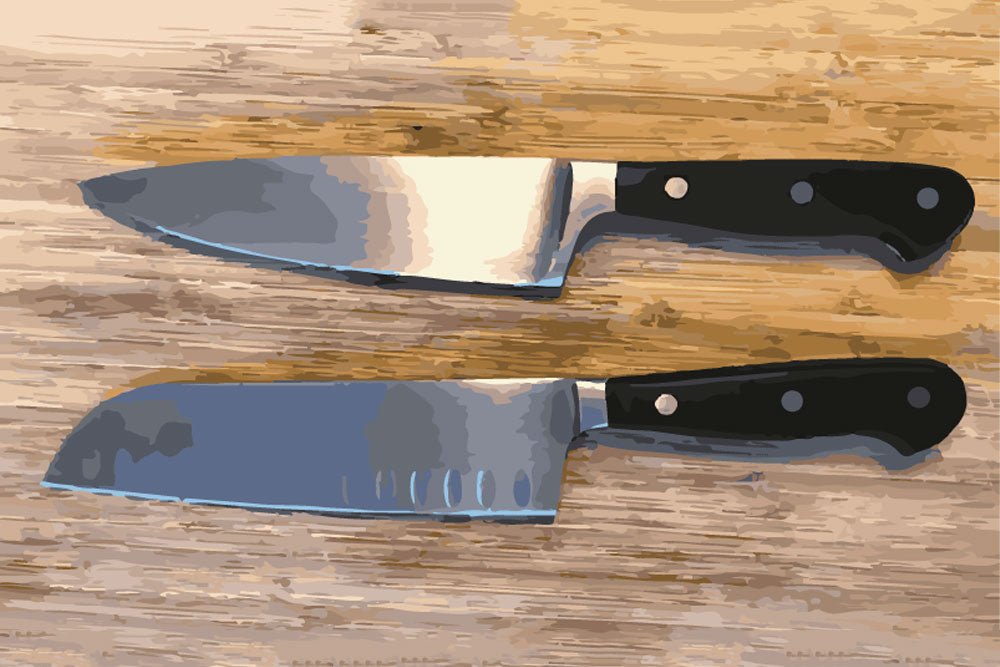
Credit: santokuknives.co.uk
Choosing The Right Knife For You
Choosing the right knife for your kitchen can be challenging. Both the Santoku and Chef’s Knife have unique benefits. The choice depends on your personal preferences and cooking style. Let’s explore the factors that can help you decide.
Personal Preference Factors
Comfort is a major factor when choosing a knife. Some cooks prefer the lighter weight of the Santoku. Others like the heft of a Chef’s Knife. The handle design also matters. A comfortable grip can make a big difference. Try holding both knives to see which feels better. Balance is another key aspect. A well-balanced knife reduces strain on your hand. Consider the balance of each knife before deciding.
Recommendations Based On Cooking Style
If you cook a lot of Asian dishes, the Santoku might be a better choice. It excels in chopping vegetables and slicing fish. The flat blade makes precise cuts easier. On the other hand, the Chef’s Knife is versatile. It can handle a variety of tasks, from chopping herbs to slicing meat. If your cooking involves different techniques, the Chef’s Knife is a good option. Think about the types of dishes you cook most often. This will help you pick the right knife for your needs.
Frequently Asked Questions
What Is A Santoku Knife Used For?
A Santoku knife is used for slicing, dicing, and chopping. Its versatile design makes it ideal for various kitchen tasks.
How Does A Chef’s Knife Differ?
A chef’s knife has a curved blade. This design allows for rocking motions, making it perfect for chopping vegetables and herbs.
Which Knife Is Better For Precision?
Santoku knives offer better precision. Their straight-edged blade provides cleaner cuts, ideal for fine slicing and dicing.
Is A Santoku Knife Good For Meat?
Yes, a Santoku knife is good for cutting meat. Its sharp edge and balanced design make it efficient for slicing meat.
Conclusion
Choosing between a Santoku and a chef’s knife depends on your needs. Santoku knives are great for precise slicing and dicing. Chef’s knives offer versatility and power. Both have their unique strengths in the kitchen. Think about your cooking style and preferences.
Try each one if possible. You might find that having both knives is beneficial. Each brings something different to your culinary experience. Happy cooking!
